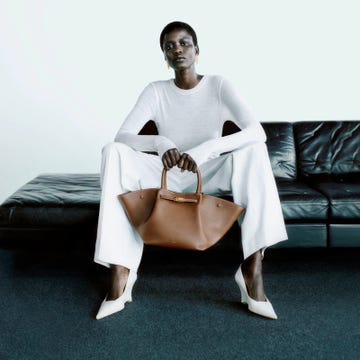Our Favorite Sustainable Brands to Add to Your Wardrobe
How to look good with a clear conscience

Every product on this page was chosen by a Harper's BAZAAR editor. We may earn commission on some of the items you choose to buy.
Now, more than ever, it’s vital for brands and consumers to think more sustainably to look after our planet. Thankfully, many players in the fashion industry are paying more attention to the climate crisis and subsequently making greener choices. Yet, with more and more brands now striving to become sustainable—or, in some cases, to appear as though they are—things can get very confusing.
You’d be forgiven for feeling overwhelmed when it comes to figuring out what to spend your money on. With endless buzzwords to understand and issues around greenwashing, it can be difficult to know exactly where to look for truly eco-friendly and ethically made clothing. That said, there are plenty of fashion brands out there producing high-quality, eco-friendly collections—which don’t sacrifice style—so you can enjoy shopping with a clear conscience. Don’t miss our Unstitched franchise, where every month we focus on one brand that knows exactly what it means to be a sustainable force for good in fashion today.
Of course, being more sustainable with fashion goes further than the labels you buy from. Whether it’s shopping at sustainable shopping destinations, embracing the rental market, or opting for secondhand over buying new, there are many steps you can take toward becoming greener when it comes to shopping. It doesn’t stop there, as caring for your purchases properly is also key to making sure they last as long as possible and don’t end up getting thrown away.
But if you are shopping new, there are sustainable ways to do so. There are plenty of brands out there to invest in that are working hard to carve out a greener space in the fashion industry. We asked some of our favorite labels what it means to be a sustainable brand in fashion. See what they had to say, below.
E.L.V. Denim
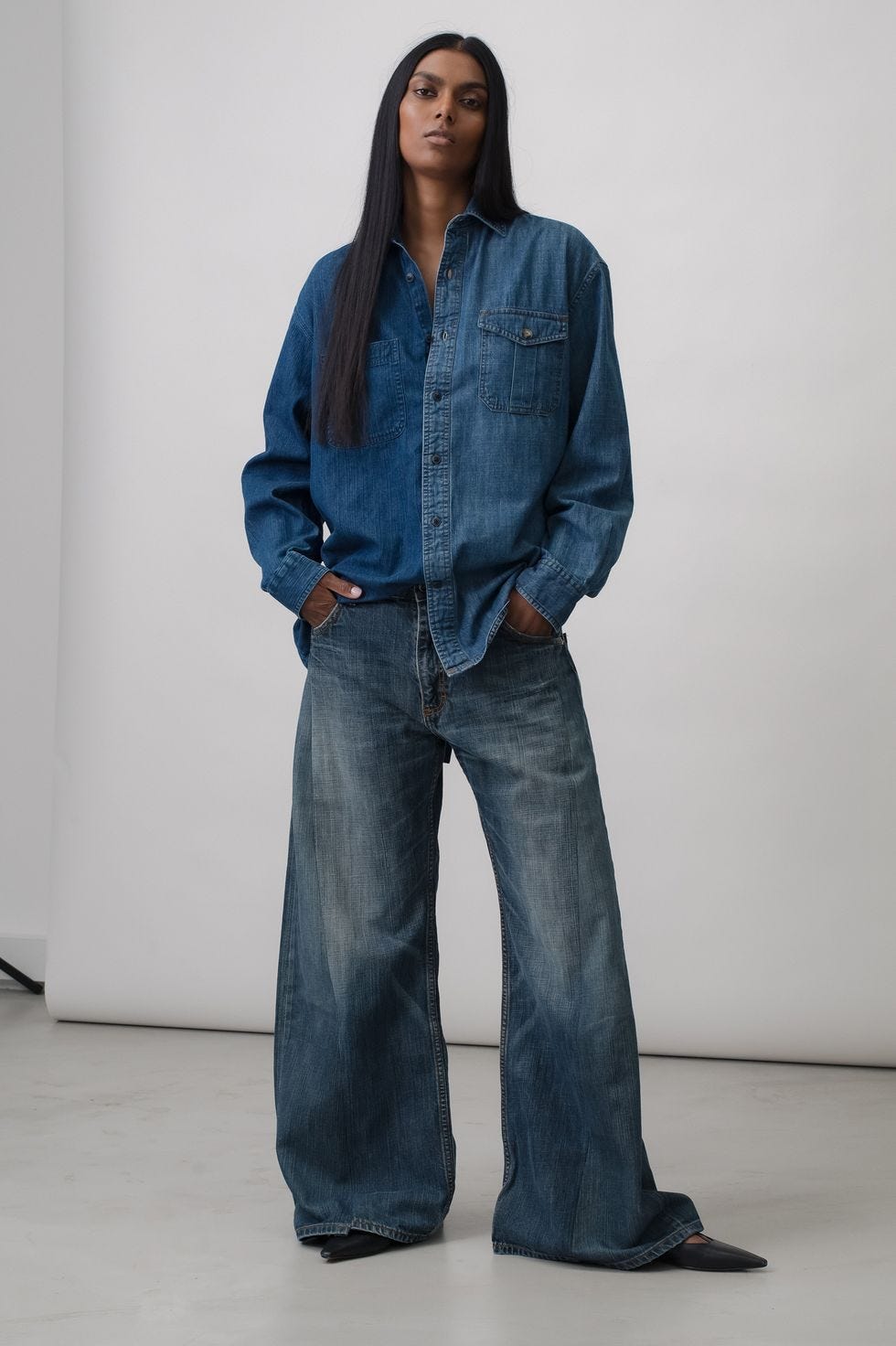
E.L.V. Denim is a great name to know when it comes to shopping for a sustainable wardrobe. The luxury label—which is based in its East London studio, and was founded in 2018—specializes in timeless-yet-statement designs made from 100 percent upcycled materials, meaning garments don’t end up in landfill and harm the planet.
Anna Foster, founder of E.L.V. Denim: “We need to encourage others to champion local manufacturing and slow fashion. I’m proud to be a thought leader in this space; however, this journey is not just for me and E.L.V. Denim. It’s to lead by example to others that upcycling that incorporates design and luxury tailoring can be a successful business model. We all need to be part of this change.”
Ninety Percent
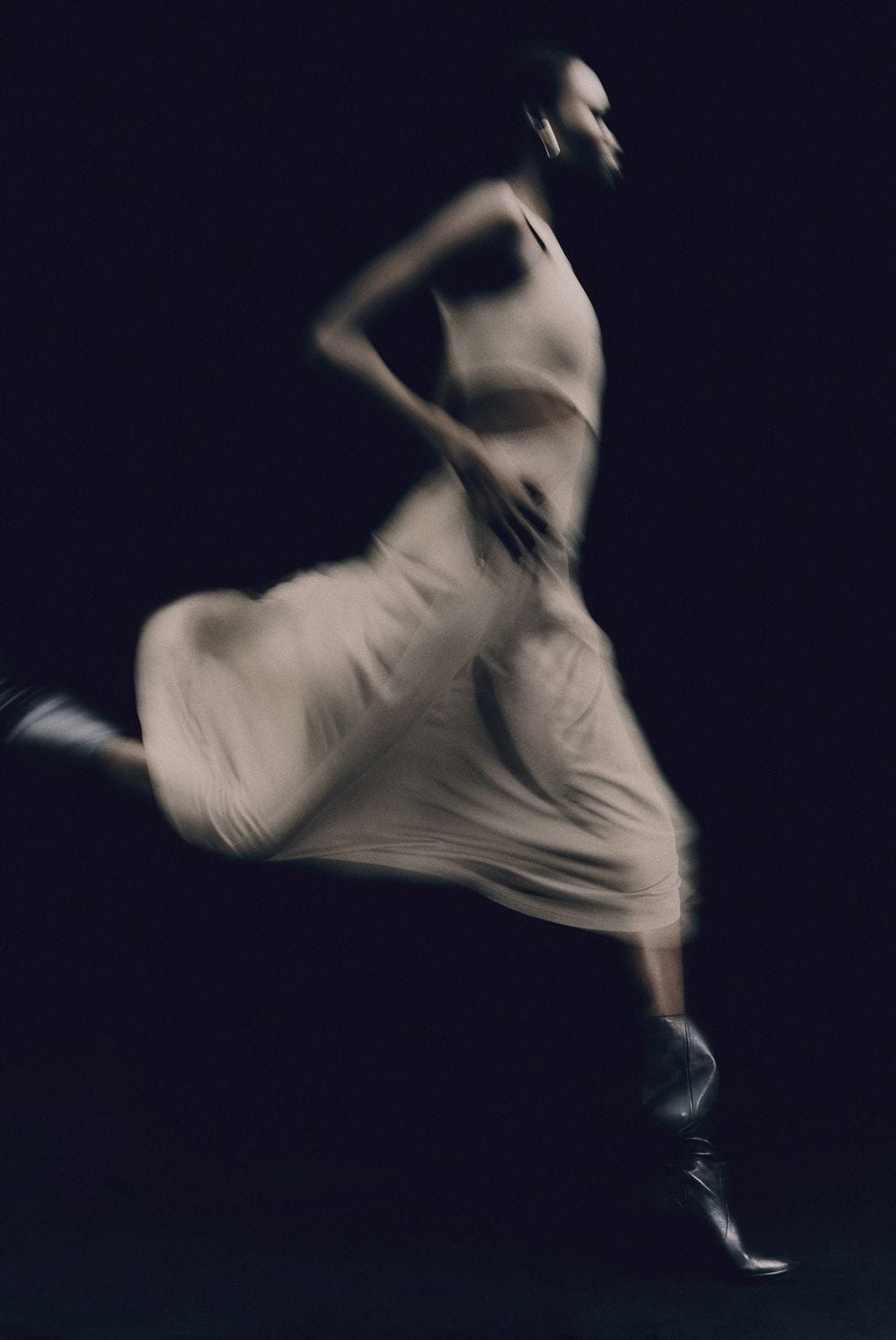
Ninety Percent puts responsible, sustainable practices above all else. This is exactly where the brand gets its name; Ninety Percent donates 90 percent of its profits to the people that make the collections happen and five worthwhile causes. The brand offers soft, modern tailoring and new silhouettes that all complement each other—perfect for capsule dressing and your forever wardrobe.
Elliot Atkinson, creative director at Ninety Percent: “I was a cofounder and creative director at BITE Studios for four years in the brand’s inception. This experience really set the creative language of a brand for me; aligning a supply chain and process with sustainability at its core comes as second nature. For Ninety Percent, I continue my design practice rooted in craftsmanship, introducing relaxed tailoring and shirting to the brand. Crafting pieces that are built to stand the test of time is key to me for real sustainable clothing; both mine and the founders’ ethics at Ninety Percent are aligned, working collaboratively to make lasting change.”
House of Marici
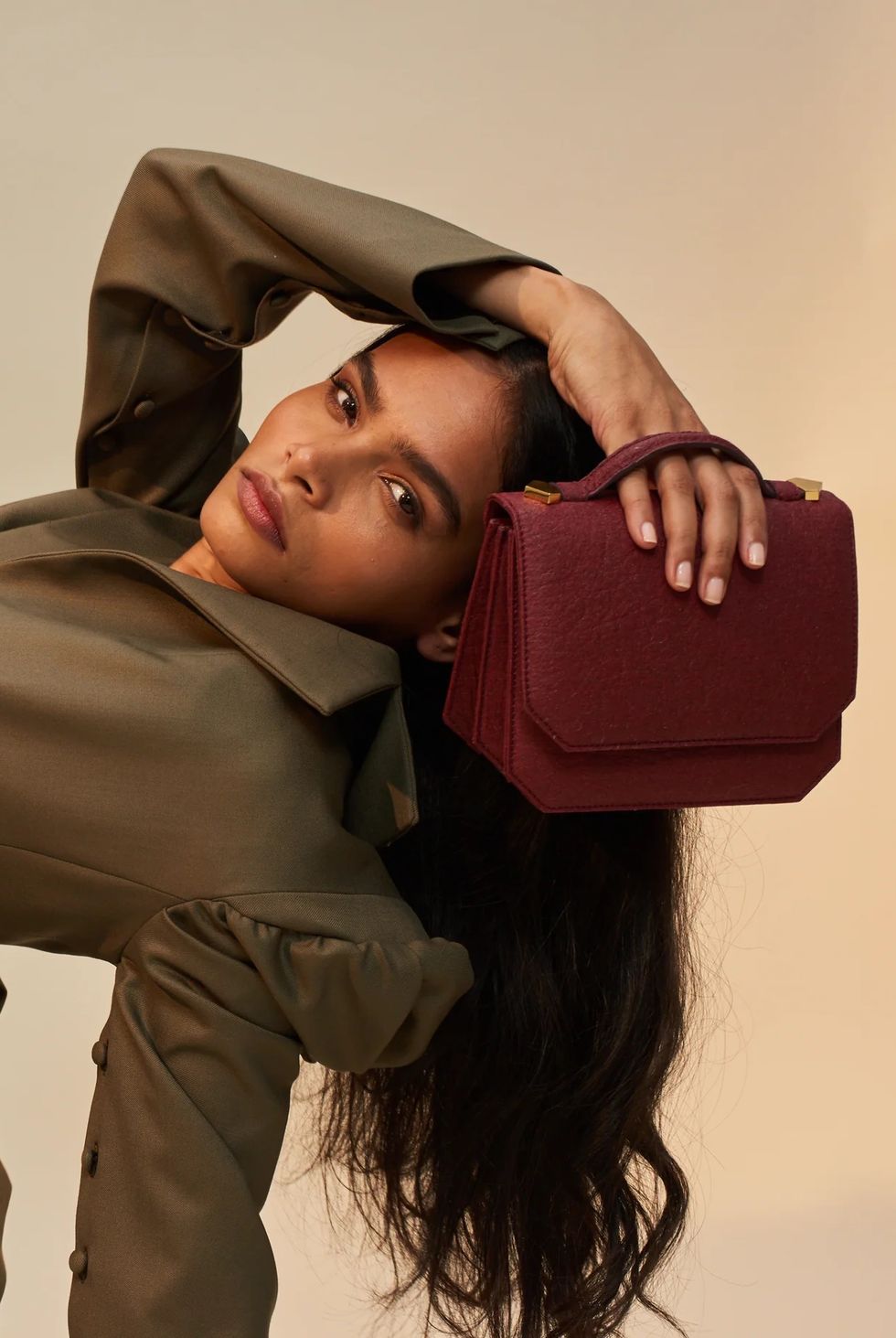
House of Marici is an accessories brand working to create environmentally conscious alternatives to luxury leather handbags. It was aptly launched on World Earth Day in 2020, and founder Amanda Navaian’s dual heritage shaped her passion for environmentalism: She grew up in Sweden and frequently visited family in Iran, where she was struck by the country’s strong tradition of craftsmanship. This led to her creating House of Marici, which uses plant-based materials without sacrificing great style.
Amanda Navian, founder of House of Marici: “My concept of a sustainable brand goes back to 2018, when I first came across Piñatex [leather alternative made from pineapple leaves] and was blown away by it. It was created by an entrepreneur called Carmen Hijosa [a Cartier Women’s Initiative Awards finalist], who worked out how to use the byproducts from the pineapple farming industry in the Philippines to make a soft, plant-based material that I now use in all my collections. For me, true sustainability means using natural products that are here on earth,
rather than synthetic alternatives.”
Sézane
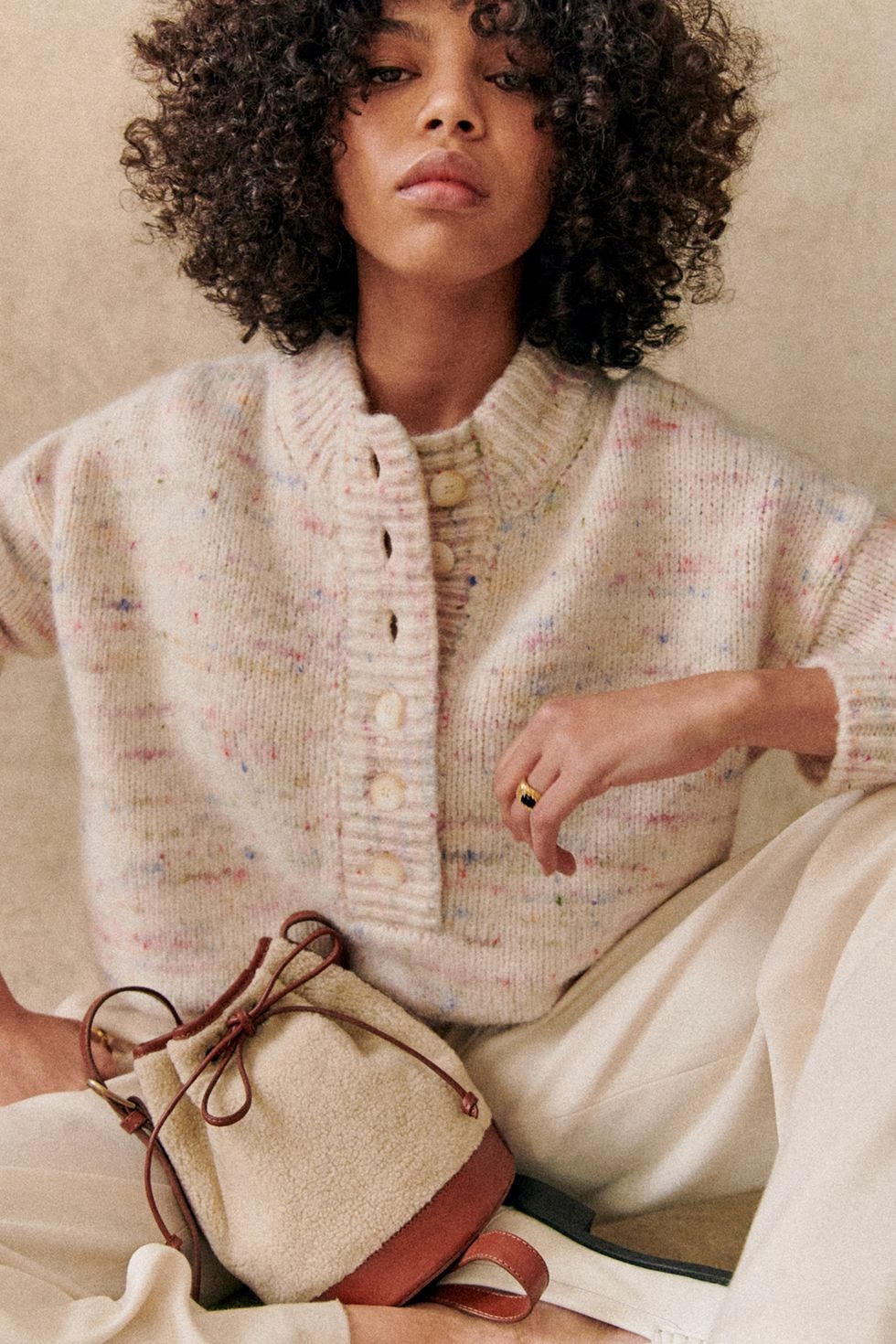
Parisian brand Sézane has a simple aim: to create high-quality, perfectly cut pieces designed to be worn forever. Over its 10 years in the industry, the label continues to focus on limited-quantity items, operating with an alternative model that is equal parts creative, innovative, and eco-friendly. You can read more about the brand’s sustainable commitments here.
Morgane Sézalory, founder of Sézane: “Sézane is sustainable by essence, with a responsible production model which has no intermediaries, flash sales, or overproduction. An ideology followed since the creation of Sézane, which has led the brand to be B-Corp Certified. From the choice of production methods, raw materials, and working conditions, to the environmental footprint and engagement in the community, B-Corp is the stringent and independent validation of what Sézane stands for.”
Gabriela Hearst
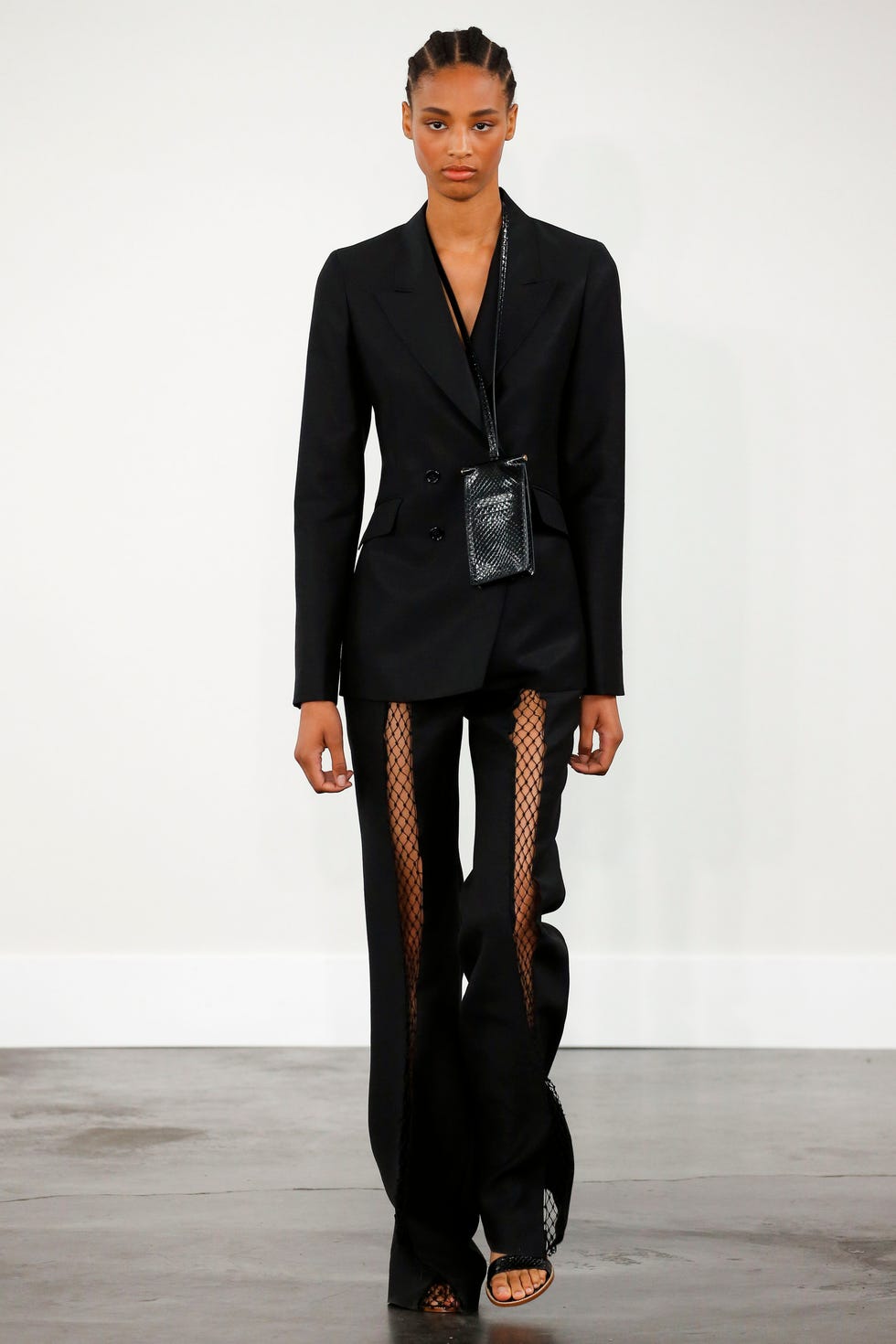
Gabriela Hearst is one of New York’s most influential designers, known for elegant collections that focus on sustainability, which is at the core of the brand. Last September, Hearst staged the first carbon-neutral fashion show during New York Fashion Week, minimizing its carbon footprint by working with EcoAct and making a sizable equivalent donation to the Hifadhi-Livelihoods Project in Kenya. The designer says around 25 percent of her collections are made from deadstock—materials that would have previously ended up in landfill—and she works with 600 women across Uruguay who make her designs by hand.
Gabriela Hearst, designer: “With sustainability, it’s not about talking; it’s about the doing. I also think if you put restrictions on someone’s creativity, it gives them more focus,” she previously told us. “My design effort is to build something beautiful that is well-crafted, using the right materials that you’re excited about from a design point of view, but that you’ll also have your whole life. That woman upstairs doesn’t want to ever give that dress away; she wants to keep it forever, and that’s my goal.”
Brøgger
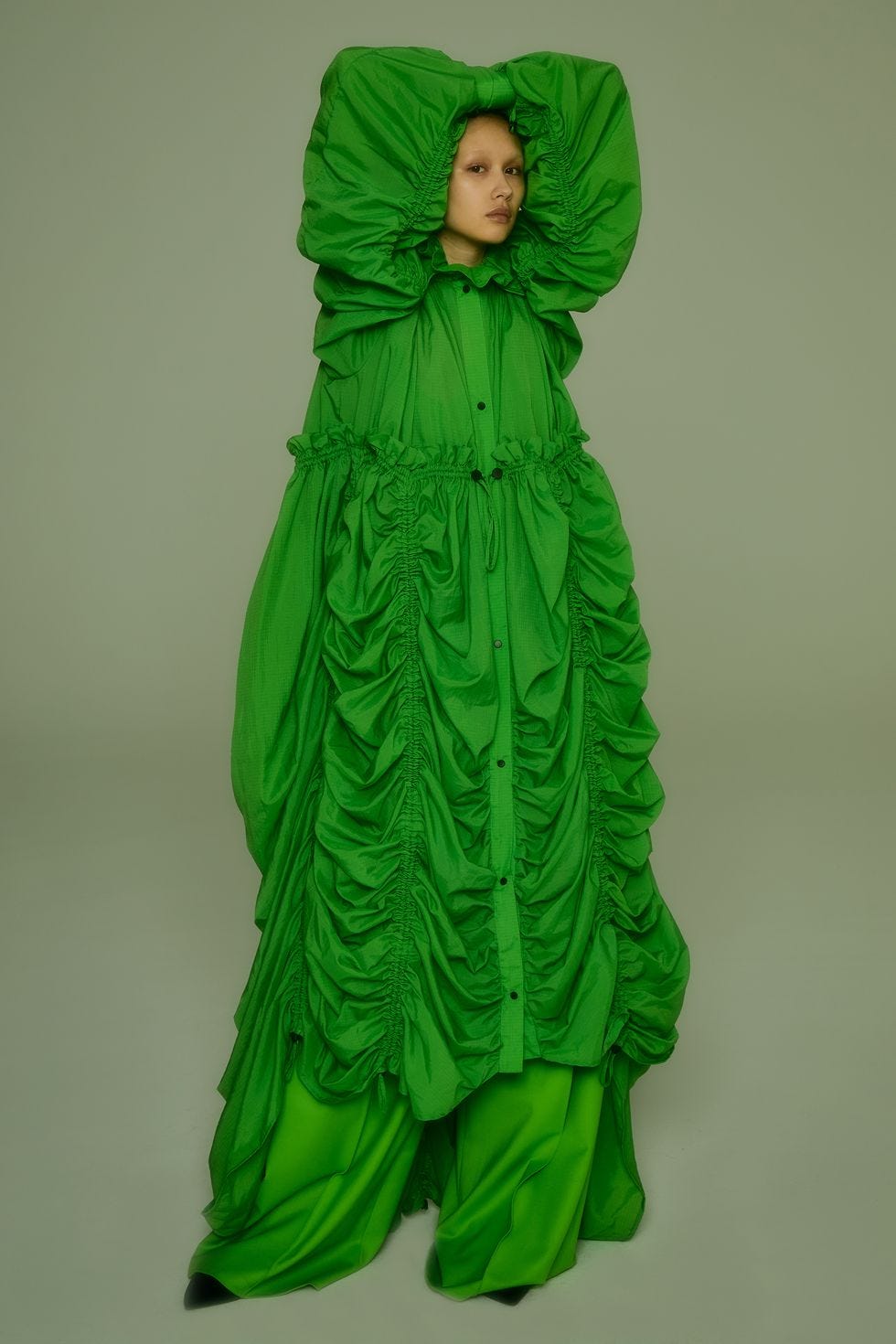
Julie Brøgger launched her Danish label in 2017 based on the idea that longevity is key to a greener wardrobe and consuming fashion in a better way. Brøgger is committed to low-impact production and is known for its perfect balance between masculine and feminine aesthetics, via sharp tailoring and soft silhouettes.
Julie Brøgger, designer: “With the current situation in the world, from a looming recession to war in Europe, choosing a more sustainable way to produce and work is really being challenged. But I’m positive that the last years of change in the industry have moved the needle permanently for brands and consumers, so we all continue to improve our practices and way of consuming fashion. Sustainability is still a big investment for Brøgger, but one that I believe will future-proof us.”
Stella McCartney
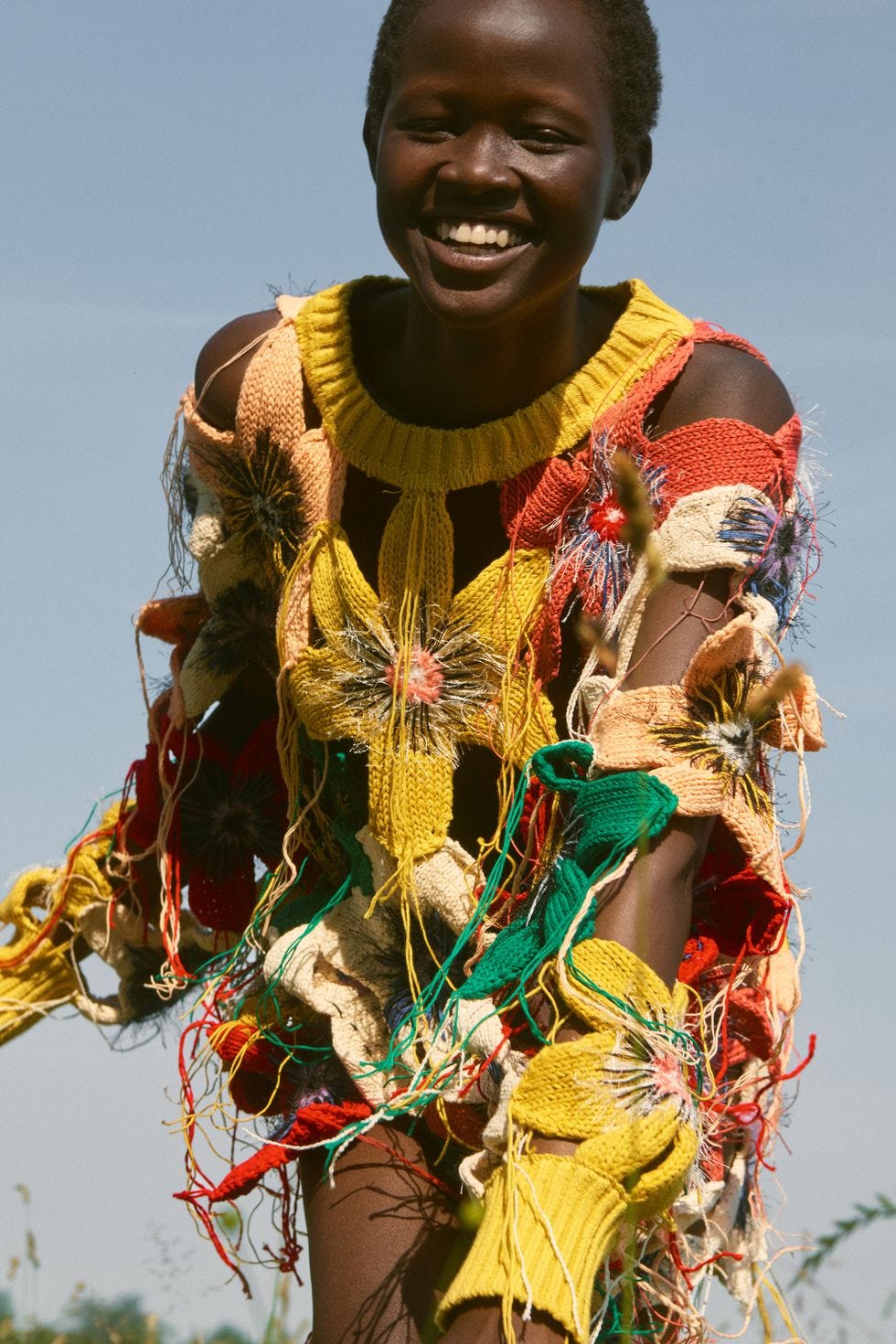
Stella McCartney writes on her website that eco shouldn’t be a word “that immediately conjures up images of oatmeal-coloured fashion or garments that are oversized or lacking in any sort of luxury or beauty, detailing, or desirability.” McCartney is known as one of the pioneers in designing ethically and challenges that stereotype, from never using leather or fur to helping the environment by protecting endangered forests.
Stella McCartney, designer: “Fashion has a deep history and tradition. From my early days working on Saville Row, I’ve developed a great appreciation for the legacy of these creative forces who came before and upon which we now build. It’s truly been an honor to work alongside talented teams who embrace the challenges of our era, while building a brand with lasting significance. I can only hope that my work in sustainability, innovation, and regenerative materials will serve to inspire future generations. I believe it is really the way we need to work now and in the future.”
Omnes
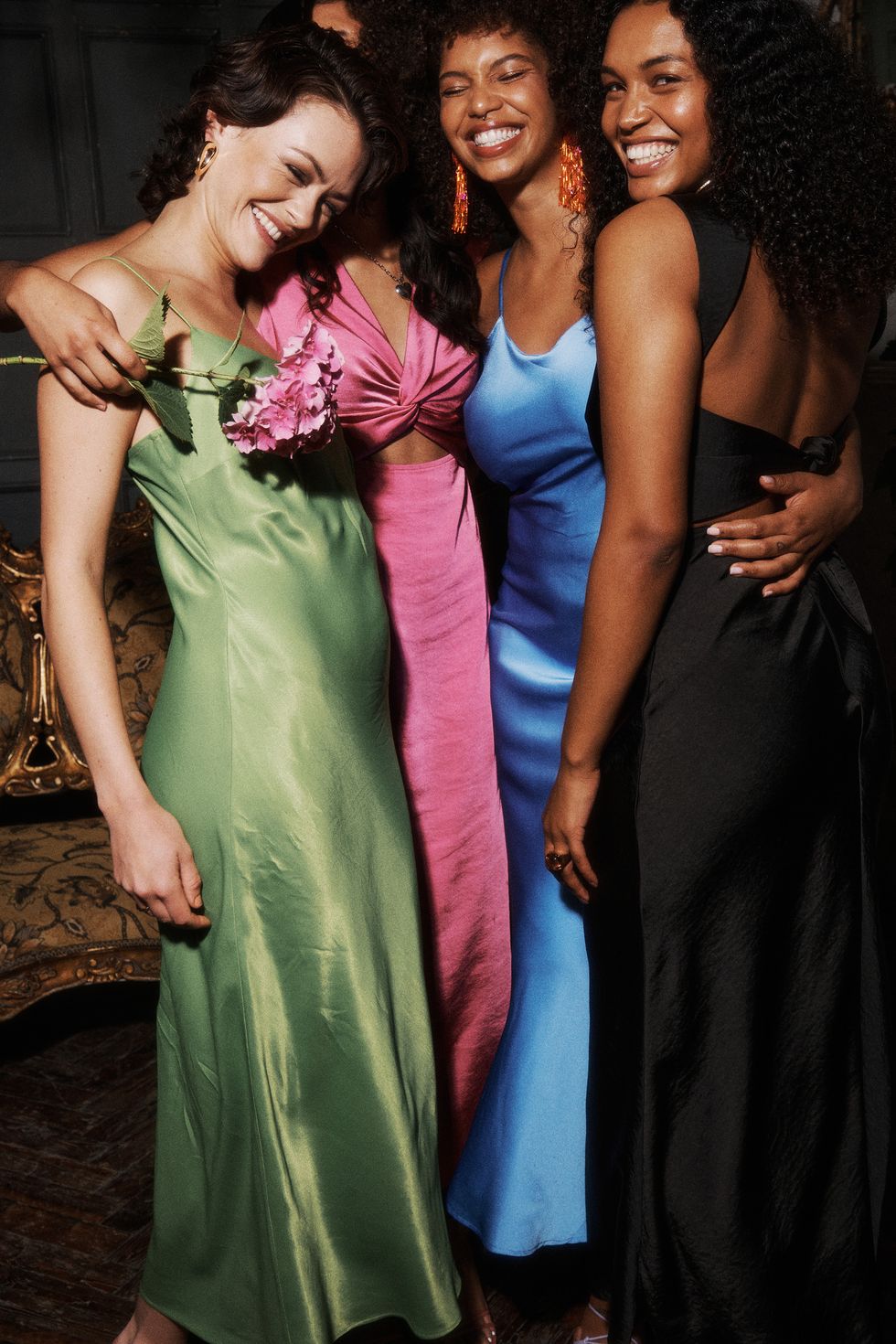
Omnes—meaning “for all” in Latin—launched in 2021, with the sole mission of making sustainable fashion accessible whatever your budget. Its products are responsibly sourced, as well as accessibly priced; the brand is a breath of fresh air and a much-needed antidote to fast fashion. From the fabrics used to the factories Omnes works with, every step of the process is researched and monitored, ensuring every piece is made to the highest environmental standards, making it a must on your sustainable brand radar. This passion is what attracted actress and sustainability activist Naomie Harris to collaborate with Omnes on an eco-friendly collection late last year.
Jordan Razavi, founder of Omnes: “For us, it also has to be accessible to the masses in order to make a real change, and so that is why we work really hard on our price points to ensure we can be bought by as many people as possible while ensuring everyone involved is paid a fair price.”
Mother of Pearl
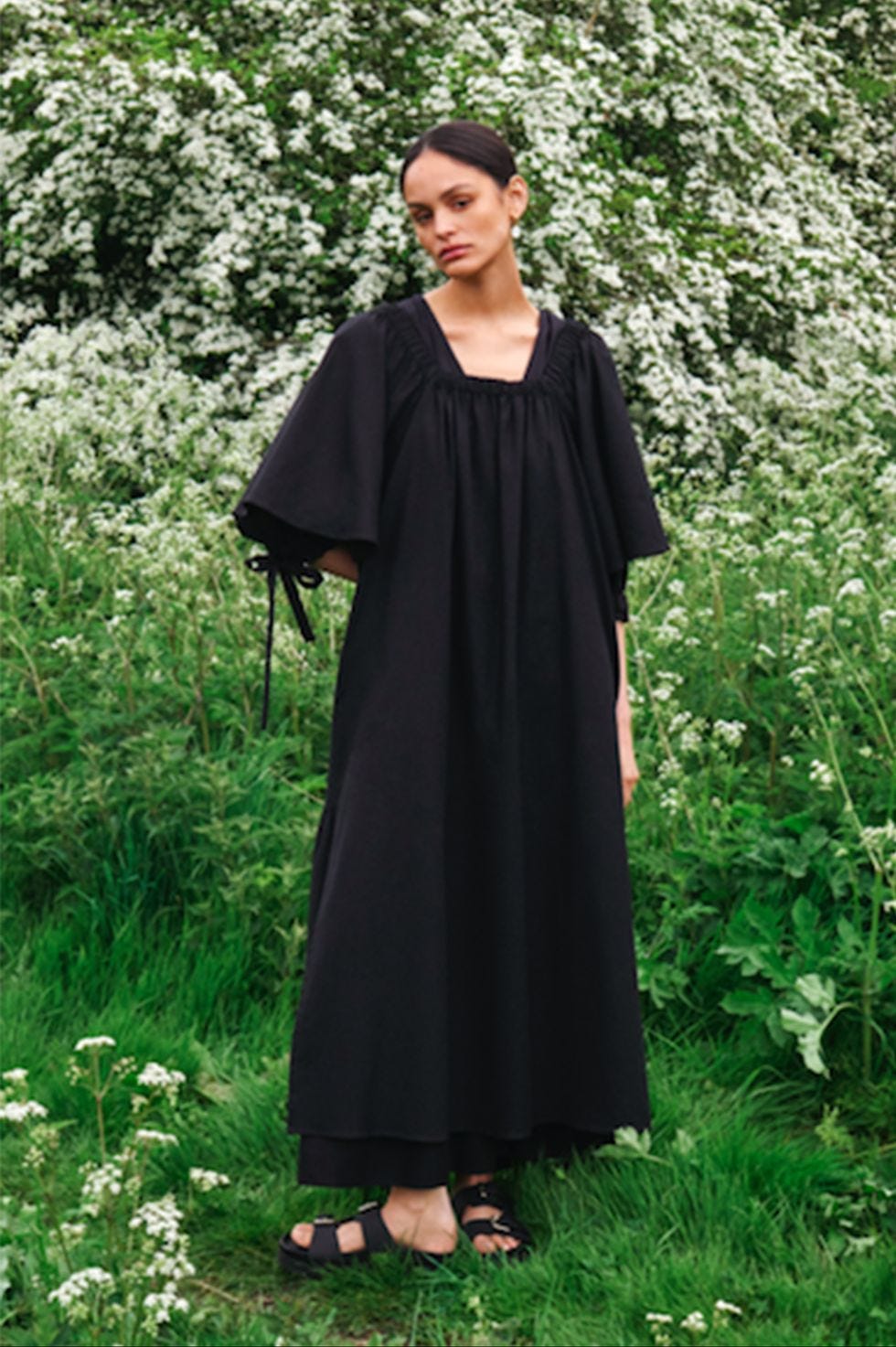
Mother of Pearl has perfected the art of designing with a conscience by producing contemporary, wearable pieces. Creative director Amy Powney has reworked the brand’s entire supply chain, by introducing natural fibers, transparent manufacturing, and a socially responsible approach to suppliers.
Amy Powney, creative director, Mother of Pearl: “There is no handbook on how to make a sustainable brand today, you have to start at the beginning. This means lots of research, asking millions of questions and some travel to understand things with your own eyes. We’ve reworked our entire supply chain this way; introducing natural fibers such as Tencel, transparent manufacturing, and a socially responsible approach to suppliers. We give access to the full story behind our products via our online sustainable attribute filter, giving the consumer the power to make informed choices. Sustainability isn’t an emerging topic for me—it’s been my passion for 16 years.”
Navygrey
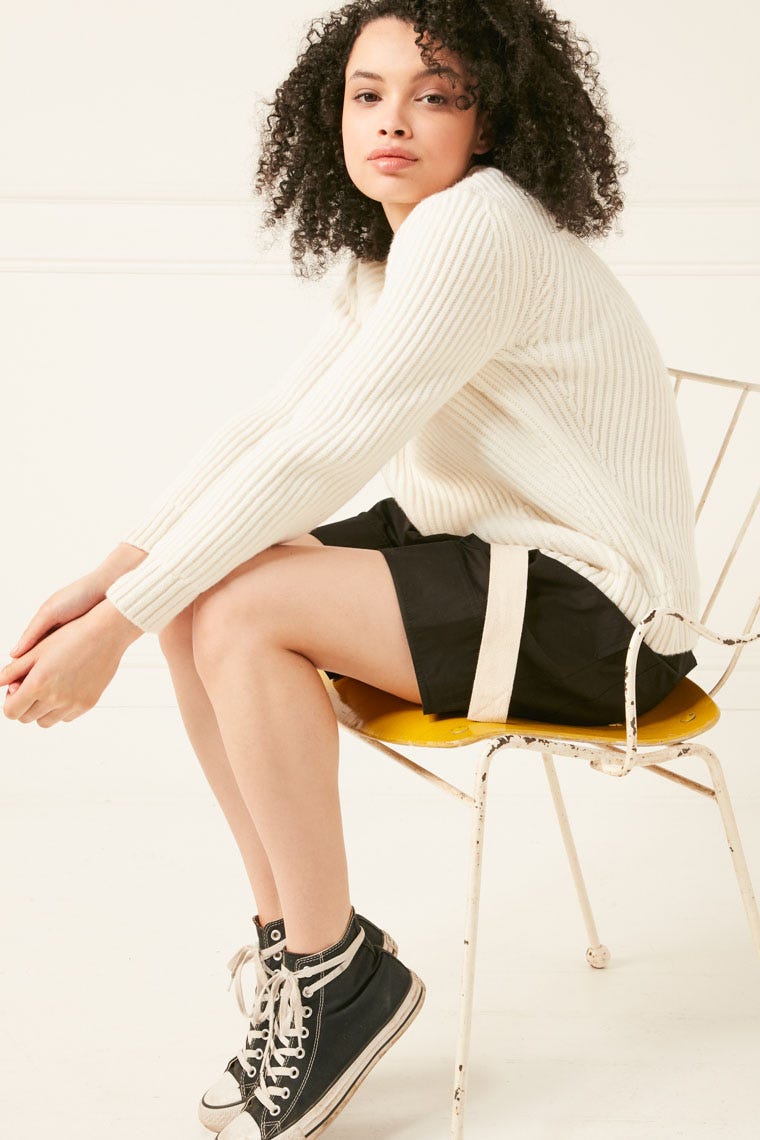
Navygrey is a must in any little black book of sustainable brands. Famed for its curated collection of classic knits, it was founded by Rachel Carvell-Spedding, who—after years of trying to find a replacement for her mother's perfect navy jumper—decided to launch her own. The brand works with some of Europe’s best-practice manufacturers to create a transparent supply chain. Each style is produced in limited quantities to avoid excess waste, certified recycled paper is used as packaging, and, as much as possible, Navygrey aims to ship the majority of stock by road and boat.
Rachel Carvell-Spedding, founder of Navygrey: “Sustainable fashion to us is about those pieces that have a real purpose in your wardrobe. Timeless, always relevant—jumpers you return to year after year. Made of the purest, traceable wool from well-treated sheep. Sheared by proper craftsmen, dyed naturally and organically. Knitted by experts in Britain and Portugal with a lifetime’s experience. Zero-waste techniques, low-impact, and made in limited batches. Consistently traceable and natural since we began in 2019.”
Brother Vellies
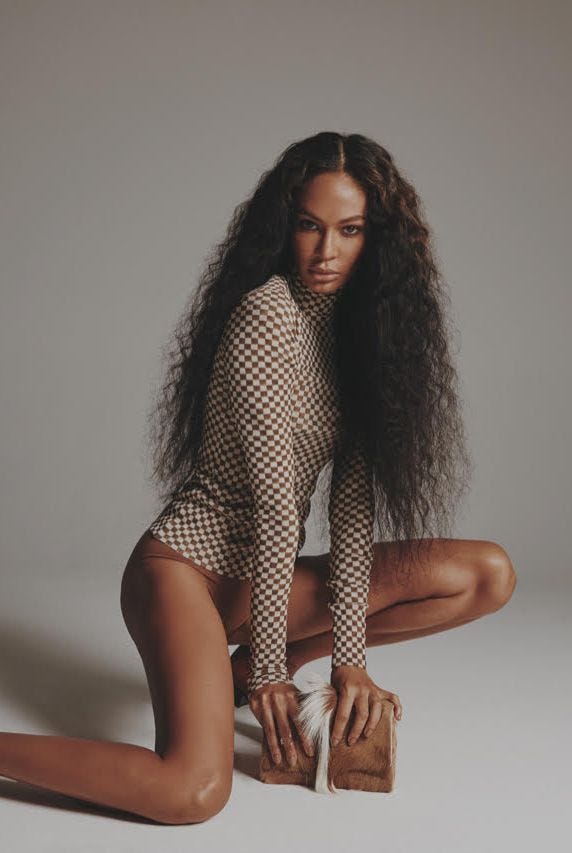
Designer Aurora James launched Brother Vellies in 2013, intending to keep traditional African design practices and techniques alive through her luxury footwear label. Artisans from across the globe create collections from vegetable-tanned leathers, soling from recycled tires, hand-carved wood, floral-dyed feathers, and fabrics. The Brooklyn-based label is loved by some of the world’s most stylish women, including Solange Knowles and Meghan, Duchess of Sussex.
Aurora James, founder of Brother Vellies: “Sustainability is at the core of the Brother Vellies brand. We are proud to help create and maintain artisanal jobs around the world by partnering with artisans who have been developing their craft over multiple generations. We seek to lessen the impact of our production practices by being careful with production quantities, minimizing waste, reusing materials, and continuously seeking to improve our processes. Sustainability to us means building products that are meant to last, treating one another with respect, and thinking about the impact we are leaving on the world.”
Bogdar
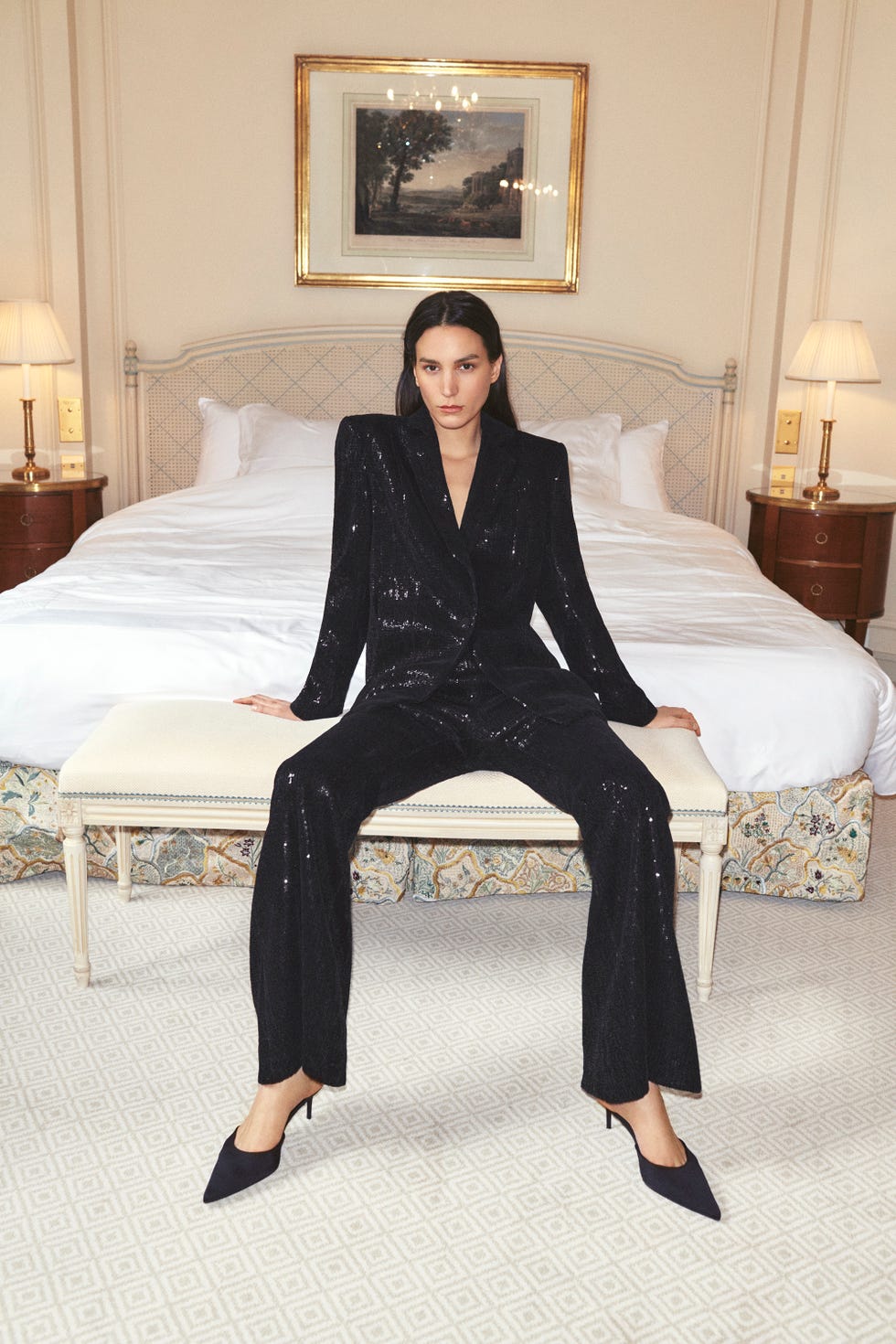
Founded by Teodora and Pavel Lozanov in 2015, Bogdar is an independent fashion label that creates contemporary, sustainable pieces. The label builds on its family’s legacy in Bulgaria, with all its pieces produced at its family-owned facility in Vidin, with a team of just 16 members. It uses organic, sustainable, and recycled fabrics, with its custom prints produced digitally to reduce water waste and ink usage. The brand works with family-owned, socially responsible suppliers that are certified in sustainability to create made-to-order pieces to avoid overproduction.
Teodora Lozanov, founder of Bogdar: “We do not claim to be 100 percent sustainable but we aim to find the most sustainable alternative to every solution. Sustainability goes far beyond using the right fabrics, it goes all the way to the processes and people. Owning our production allows us to be involved in every step of the process—be it our solar panel heating system or simply the happiness and well-being of the people that we work with. We aim to prove that sustainability can be chic, fun, and sexy.”
Stine Goya
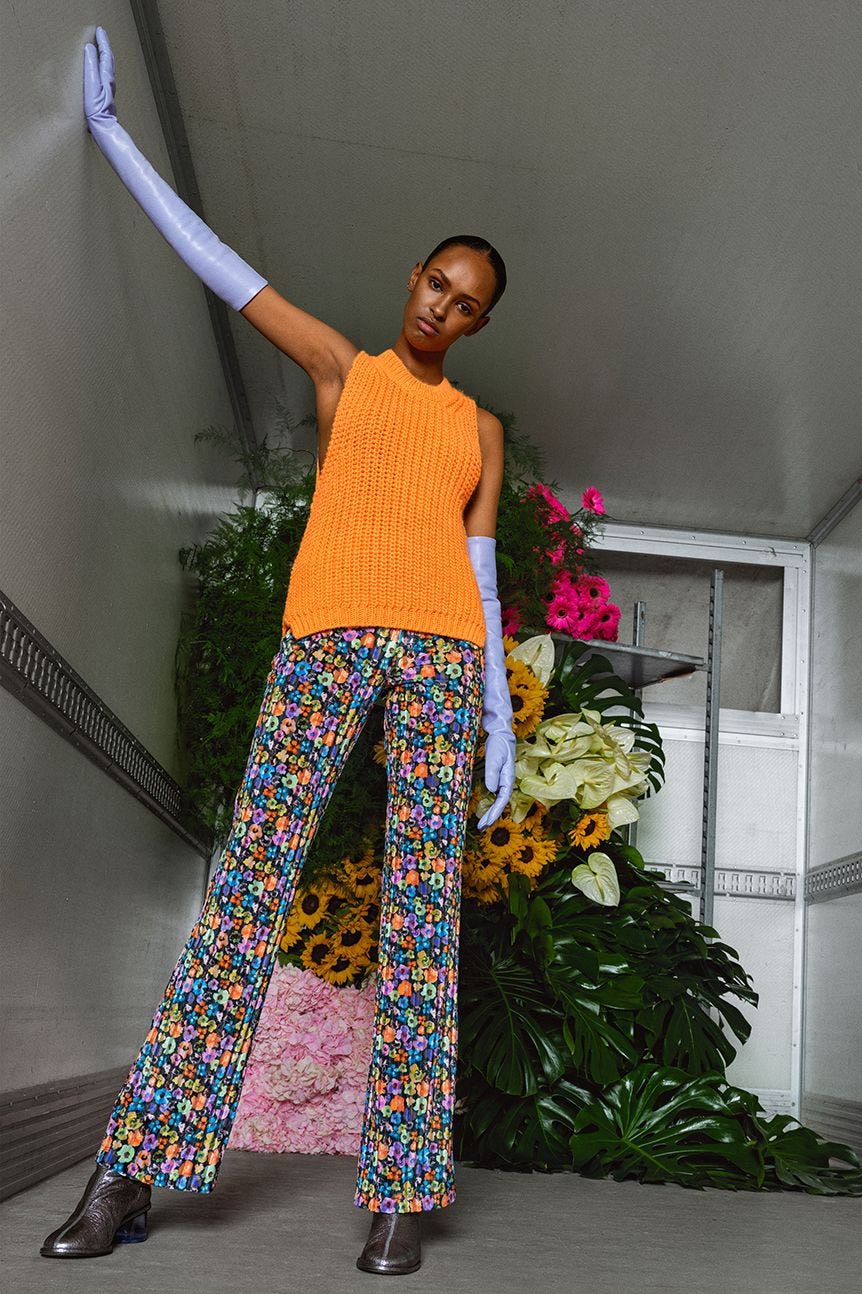
Copenhagen-based label Stine Goya is known for its playful, colorfully printed dresses and separates. Goya is committed to sustainable practices, reducing waste, and using smart fabrics.
Stine Goya, designer: “Being a sustainable brand in today’s fashion industry can mean a lot of different things. For us, it means that every action we take is done so as responsibly as possible with the planet and its people in mind. Becoming a sustainable brand is a journey and we try to be as transparent as possible throughout. It is challenging but actually pushes us to be more creative at the same time. We are becoming more and more aware of the numerous intricacies within the topic itself, making it easier to navigate towards the right solutions. I believe it is useful for consumers to know that there are so many different avenues to becoming more sustainable and that every individual making a small effort is contributing to positive change in the world. Every effort counts, and we should all encourage each other to make more responsible choices in everyday life.”
BITE Studios
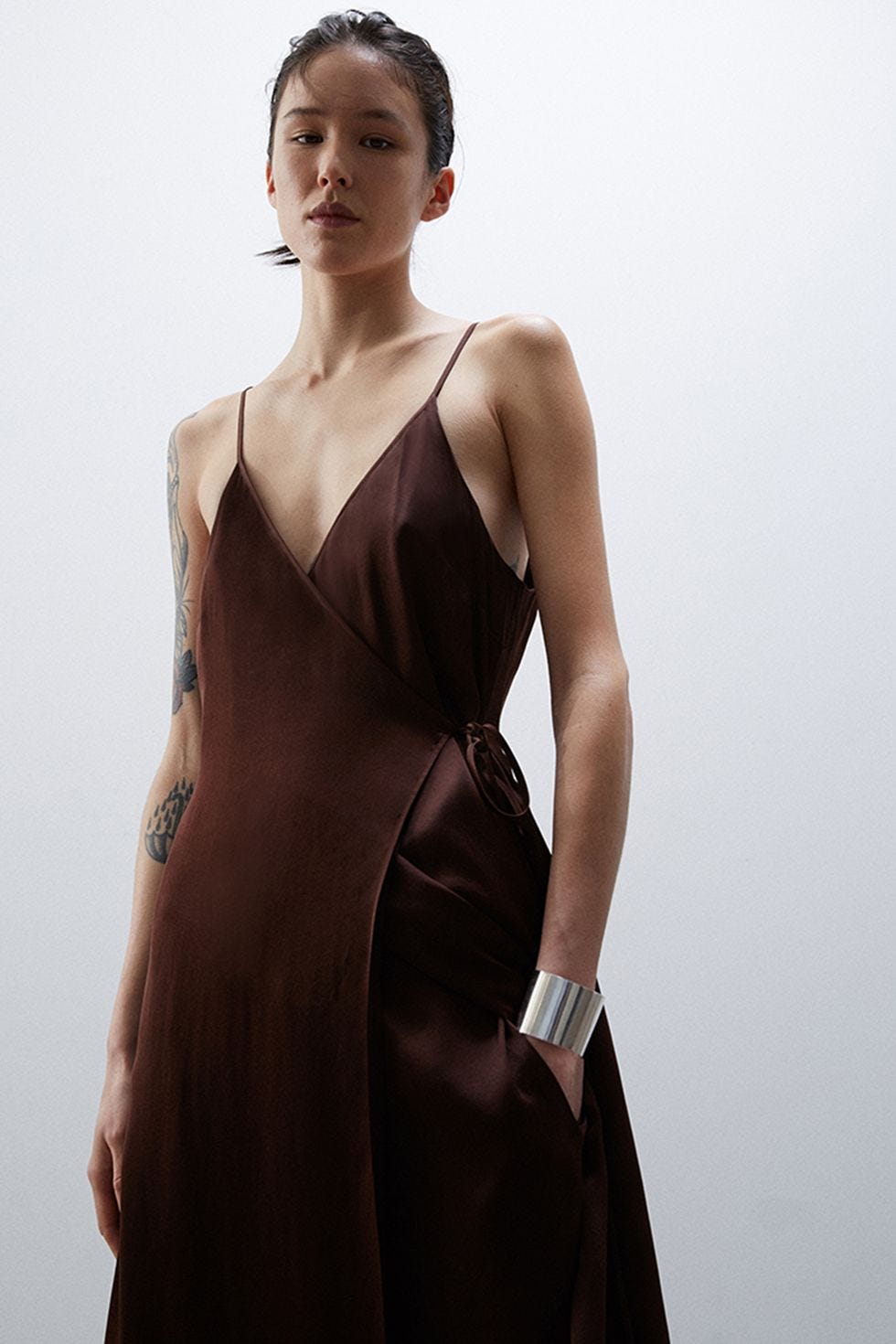
BITE (an acronym for “By Independent Thinkers for Environmental Progress”) was started in Stockholm by four cofounders with a combined passion for sustainability. The minimalist label, made using certified organic fabrics, comprises 20 fixed styles that are updated seasonally, promoting the idea of timeless clothes that are made to last. The results are elegant, well-cut pieces in shades of navy, oatmeal, and grey with pops of orange thrown in for good measure.
William Lundgren, cofounder and CEO of BITE Studios: “Our mission is to create uncompromisingly sustainable yet thoughtfully designed clothes. By creating a thoughtful, pared-down wardrobe with meticulous attention to fabrics and details we can offer high-end clothing with minimal impact on the environment. Each BITE piece is created with the lightest possible environmental footprint with a continuous strive to find more sustainable solutions. Right now, 96 percent of the luxury materials in our collections are of organic, recycled, or low-impact origin. Each piece is designed to be exceptional, to stand the test of time. We also offer a circular system, called BITE buyback, with the aim to ensure a longer lifespan for garments and textiles already part of the fashion ecosystem.”
Asket
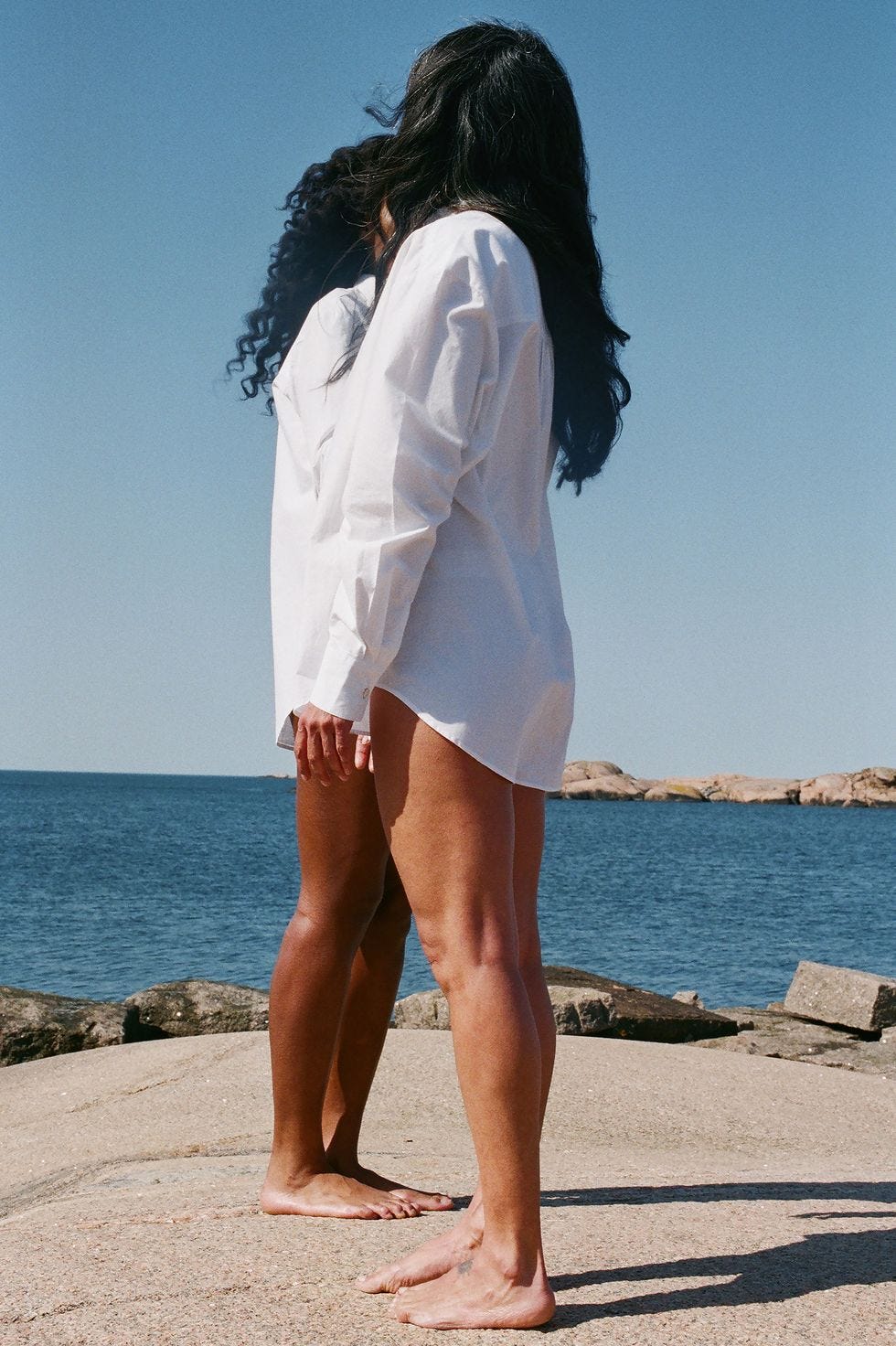
Asket focuses on giving its customers the perfect fit—which, as we know, is key to any capsule wardrobe. If you’re purchasing the right size with good quality, you won’t need to keep replacing, therefore taking a greener approach to your wardrobe. With 50 sizes available, there’s truly something for everyone with Asket.
Dworsky and Bard Bringéus, founders of Asket: “When it comes to the word sustainability, we are on the side of caution; in fact, you won’t find it anywhere on our website. The reality is that there’s no such thing as sustainable fashion: Every garment that’s created has an impact. Only by reducing product output and decreasing consumption habits can we turn around issues surrounding the fashion industry. Asket’s whole business model is hinged on distancing ourselves from trends and seasons, and instead building a permanent collection of garments designed on the principle of maximum mileage, honoring the resources it takes to create them, and with it slowing down society’s insatiable need for replacement."
Maggie Marilyn
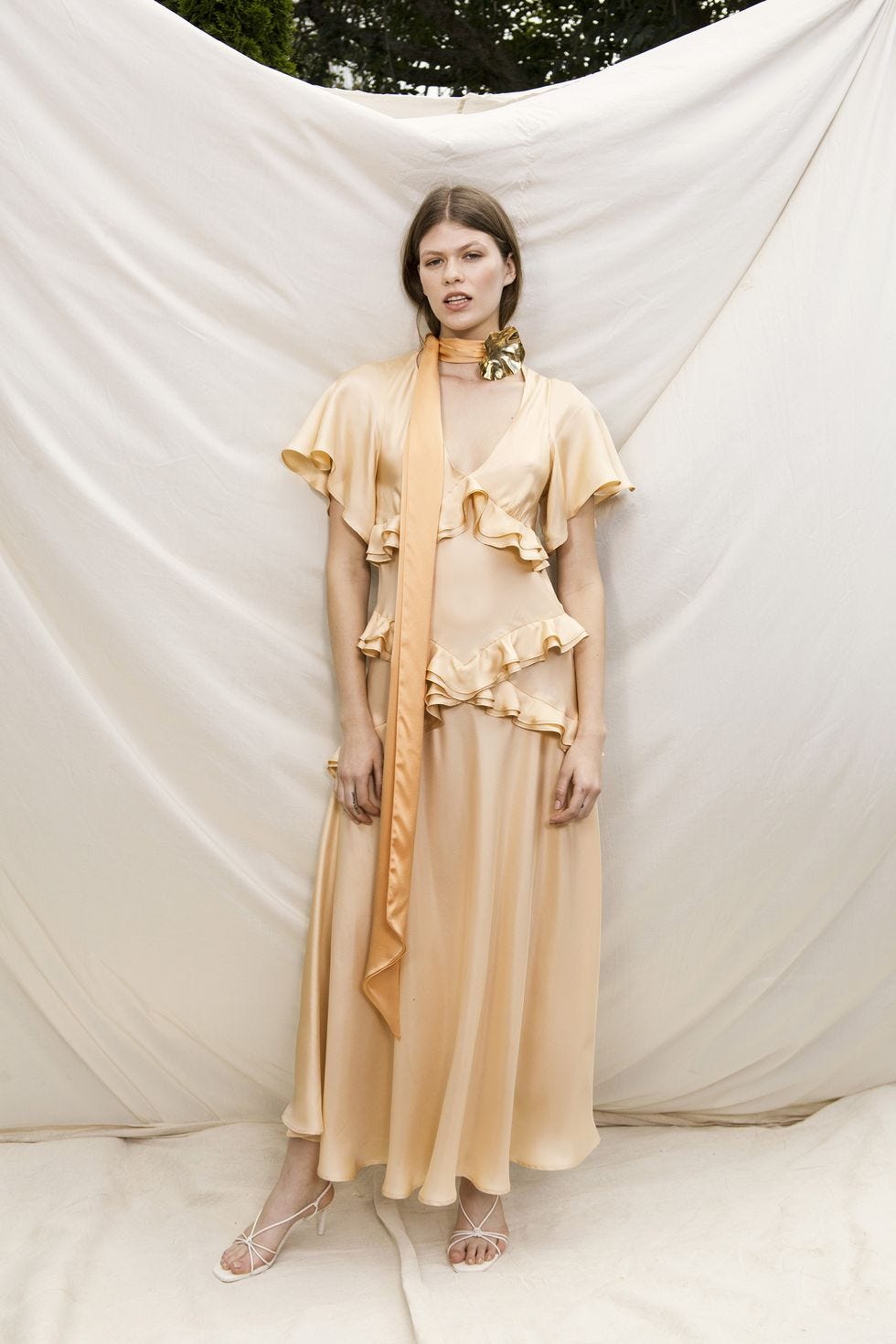
Maggie Marilyn believes transparency is key when it comes to being a responsible brand. The designer is always vocal about who makes her collections, where the materials are sourced and what the supply chain looks like. This year, the brand received its B Corp certification, recognizing it for its social and environmental impacts—meaning shoppers can trust Maggie Marilyn when the brand says it’s using fashion to create a better world.
Maggie Hewitt, founder and designer at Maggie Marilyn: “Unfortunately, the word sustainability is still largely unregulated and therefore susceptible to misinterpretation and greenwashing. For Maggie Marilyn, our commitment continues to be running our business in harmony with people and the planet, and forging a future in fashion that is rooted in transparency, circularity, regeneration, and inclusion.”
Nynne
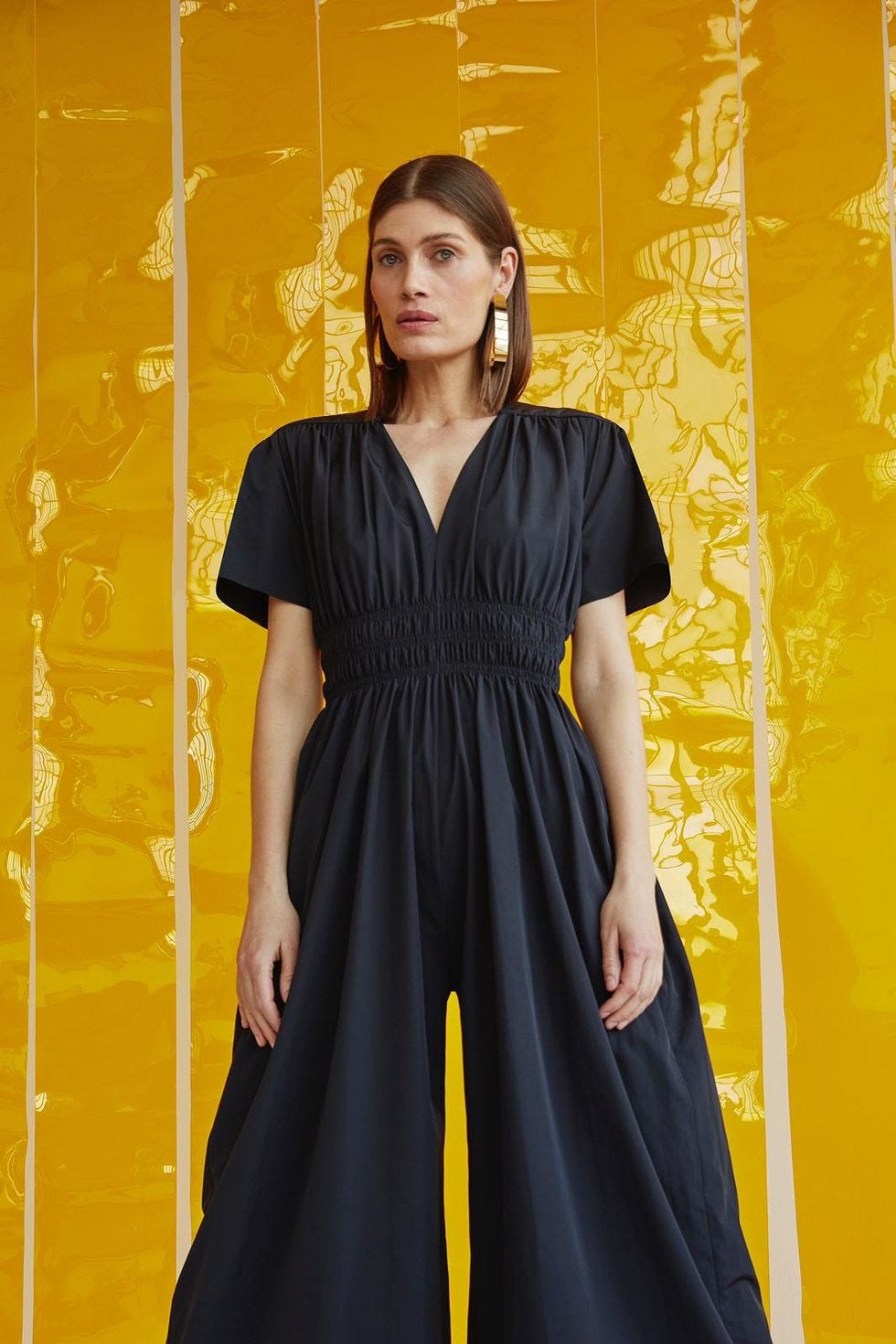
Nynne represents a culture of buying less but buying better. The label does this by focusing on eight key areas of sustainability which it aims to implement throughout its operation; materials, production, proximity, avoiding deadstock, consciousness, durability, packaging, and its own “Diana” concept. The brand’s signature piece, the Diana dress, represents Nynne’s way of designing pieces that are versatile, stylish, and timeless.
Nynne Kunde, founder of Nynne: “Sustainability should be incorporated into most businesses in some way as a standard. For us, it means being a brand that has a business-wide focus on sustainable practices and taking hard and cost-effective decisions to run an ethical production. Beyond this, to be a truly sustainable brand today, we need to put resources and a lot of effort into textile research, trying to change consumer behavior to move away from fast fashion and educate our customers to buy better.”
Sheep Inc.

Founders set up Sheep Inc. to demonstrate there can be a new way of producing fashion and where clothes are part of the solution, rather than the problem. When you buy your jumper, you’re allocated a real-life sheep from the same New Zealand farm your jumper’s wool comes from. Each sweater has a digital NFC tag on the hem, and you’ll also be sent regular updates on how your sheep is doing. All Sheep Inc.’s farms comply with the stringent animal welfare standards set by the label and ZQ Merino.
Edzard Van Der Wyck, CEO and co-founder of Sheep Inc.: “Brands must behave in a way that has a regenerative effect on the environment. So that doesn’t just neutralize its impact, but through its existence and the way it does business improves the state of the planet. We approach our supply chain from the bottom up compared to the top-down approach of traditional brands. This gives us 100 percent transparency and total control over every part of the supply chain that we optimize for sustainable impact. We also run a fully impartial third-party life-cycle assessment on our products to ensure that there is no greenwashing to our claims.”
Bassike
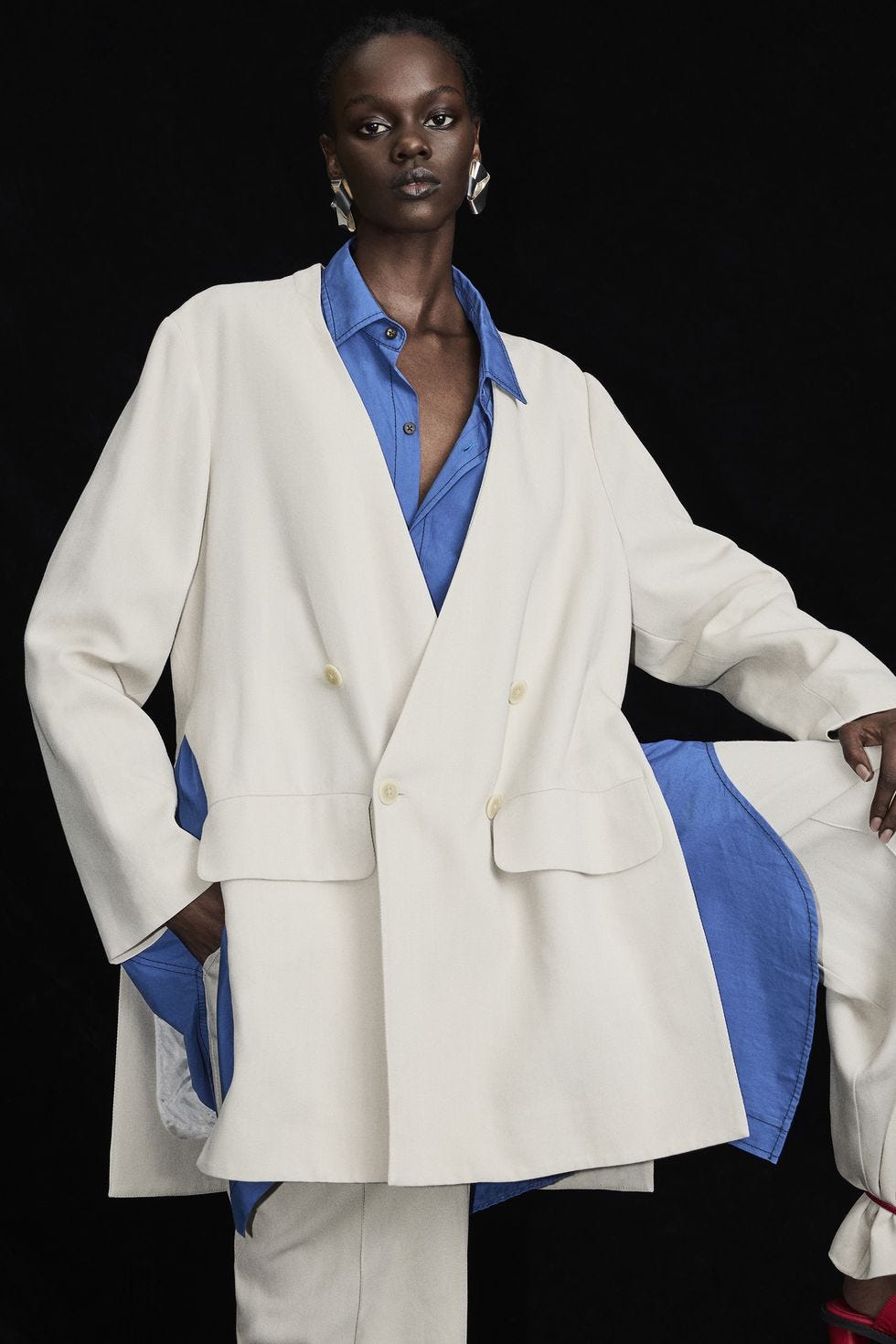
Bassike is built on the ethos of treating people and the planet with respect, ever since it first launched in 2006. The label has become the go-to for luxurious and wearable everyday pieces, that can be dressed up or down depending on your aesthetic. Bassike focuses on high-quality design and is committed to sustainable manufacturing and supports local industries in Australia, where the brand is based. Bassike’s hard work hasn’t gone unnoticed, as it achieved B Corp and carbon neutral certifications.
Deborah Sams and Mary Lou Ryan, Bassike cofounders: “Shopping with a conscience and supporting ethical brands has never been more important. We don’t pretend to be perfect, but we are proud of the work we have done supporting our local industry and working with organic cotton from the very beginning, and more recently achieving B Corp and carbon neutral certification. These milestones reflect the many commitments we have made over the years, from producing garments in Australia with green energy, to zero-waste innovation by partnering with a world-leading technology that will repurpose our excess cotton jersey material into organic mulch to be reused in other industries. By purchasing a Bassike product, you know you are supporting a design-led business that is considerate of people, planet, and prosperity for all.”
Del Moment
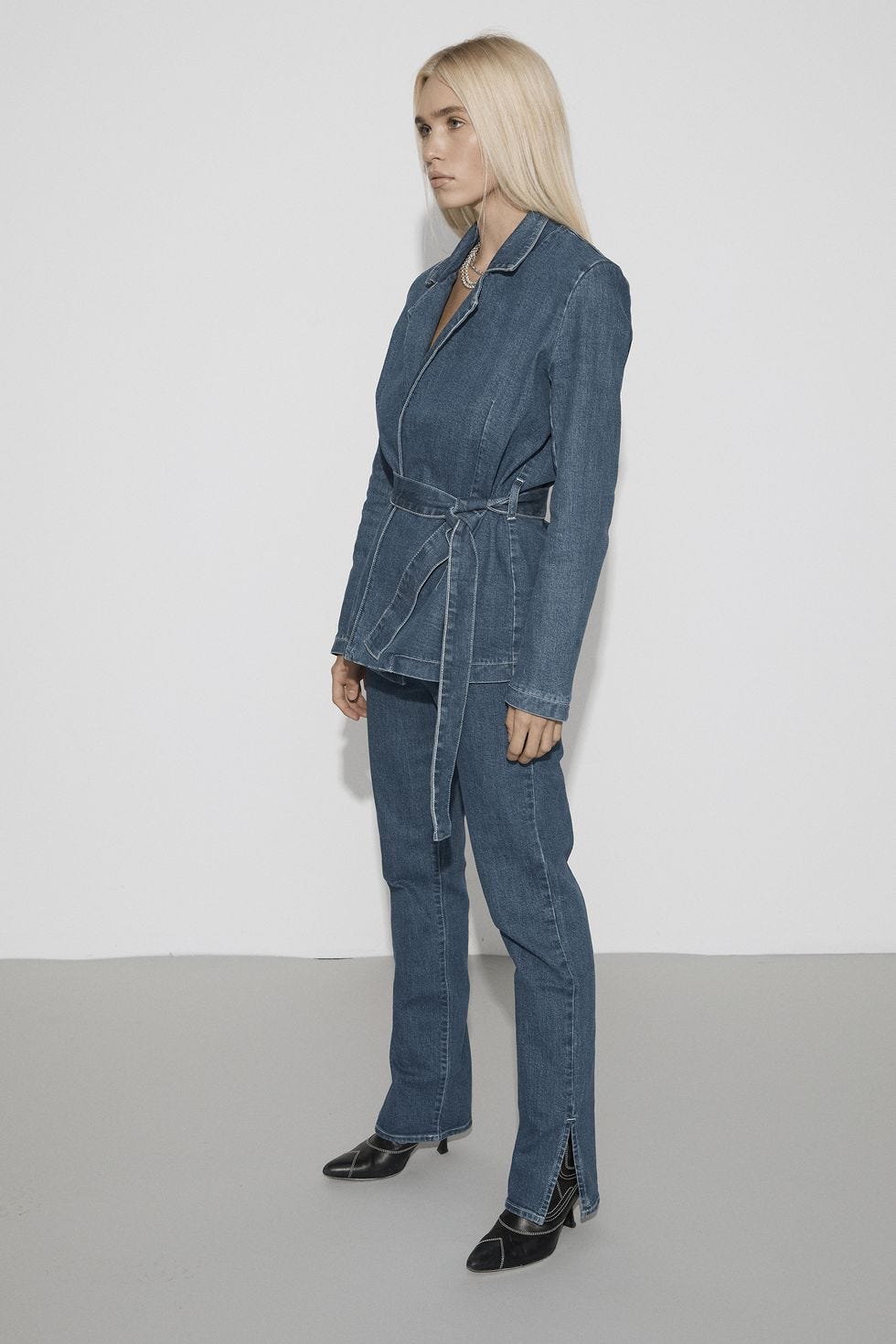
Del Moment was started to educate and always put people before product, creating a wardrobe that we’re truly proud to wear. The brand is 100 percent manufactured locally in Australia and extremely committed to full transparency and uses sustainable materials to ensure ethical production.
Bianca Gregg, founder of Del Moment: “No shortcuts, authentic transparency, and active conscious choices. It is the responsibility of the brand to push the boundaries of what came before us and cultivate change. If you are a sustainable business, it must be authentically implemented from a foundational aspect of the business, not be an afterthought. Transparency is key; this is what makes sustainability inclusive and accessible. A sustainable business has the responsibility to educate the community and audience.”


